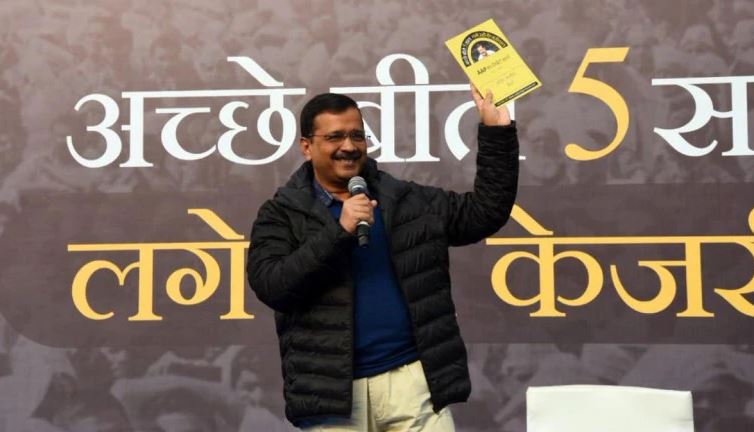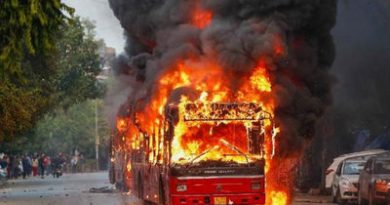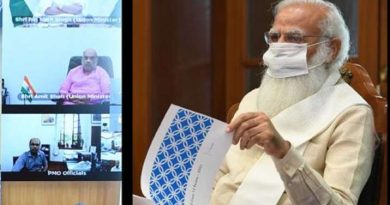Delhi election : Is there No Face in Delhi BJP to contest against Kejriwal?
The BJP will highlight PM Modi’s good governance, field 40-45 new faces and hope to see the Congress eat into the AAP’s votes
On January 13, a seven-hour-long meeting of the Delhi BJP’s core group at the residence of the party’s national president, Amit Shah, discussed the campaign strategy and candidates for the forthcoming assembly election in the national capital. An election the party is contesting without a chief ministerial face.
The BJP intends to field 40-45 fresh faces, including four of its sitting MPs, in this election. The probable candidates for these 45 seats were discussed by the top leadership at the meeting. Once another round of discussions, for the remaining 25 seats, is done, the names of candidates will be sent to the party’s central election committee this week, to be ratified and declared.
Elections will be held in Delhi on February 8 and the results will be declared on February 11. In the mid-term poll in 2015, the Aam Aadmi Party (AAP) had swept the election, winning 67 of the 70 seats. Five years on, the AAP is considered by many as well-placed to repeat its win, on the back of the Arvind Kejriwal government’s populist schemes, such as free water, subsidised electricity, mohalla health clinics and refurbishing of government schools.
The BJP remains the prime challenger to Kejriwal and his party, with the Congress having a chance in some assembly segments. Given Kejriwal’s popularity, the AAP is trying go one up against the BJP by challenging it to declare its chief ministerial candidate. However, the BJP national leadership realises that declaring a candidate pre-election could fuel factionalism in the state unit and prove counterproductive. The party believes it can do well if the campaign discourse is set constituency-wise. It is aware that Kejriwal’s personality-oriented campaign could help the AAP override anti-incumbency.
However, to address anti-incumbency, the AAP too is planning not to give tickets to 30-35 MLAs. This list could include three ministers. This suits the Congress, for there are constituencies where Congress leaders wield clout but stand to lose if the campaign turns personality-oriented.
A crucial factor will be Delhi’s Muslim voters, who make up 13 per cent of the electorate. Their voting pattern could determine the results in more than 15 seats, including Okhla, Seelampur, Matia Mahal, Ballimaran, Mustafabad and Chandni Chowk, along with Sadar Bazar, Kirari, Sangam Vihar, Babarpur, Karawal Nagar and Rithala. Sections of the Muslim community are upset with the AAP for not taking a tough stand on the Citizen (Amendment) Act. It’s a segment the Congress hopes to win back.
The BJP wants four of its MPs to contest the assembly poll. West Delhi MP Parvesh Sahib Singh, son of former Delhi chief minister Sahib Singh Verma, has a hold among Jats. Rajya Sabha MP Vijay Goel has a sway over the Baniya community. There is also Union health minister Harshvardhan, MP from Chandni Chowk. A decision on getting Harshvardhan to contest, however, will finally rest with Prime Minister Narendra Modi and Shah. If not Harshvardhan, the party intends to field Ramesh Bidhuri, MP from South Delhi and a prominent Gujjar leader. Another prominent face is BJP Delhi chief Manoj Tiwari. The party is wooing the Punjabi community by fielding BJP national secretary R.P. Singh, Ashish Sood, along with Manjinder Singh Sirsa of the Shiromani Akali Dal.
BJP insiders say all these leaders are claimants of the chief minister’s post should the party come to power after a gap of 16 years. “These leaders may have a strong hold on the communities and their respective pocket boroughs, but their ability to develop cross-community support is yet to be tested,” a BJP insider told INDIA TODAY. The party feels that shaping the campaign around the transparency and good governance of PM Modi would work better.
Mathematically, this could be a better strategy. In 2015, while the BJP managed to send only three MLAs to the Delhi assembly, it maintained its vote share of 32-33 per cent. It was the shift of about 25 per cent votes from the Congress to the AAP that cost the BJP dear. Unlike 2015, this election hasn’t unified the opposition against PM Modi and the BJP, with fringe players, such as the Bahujan Samaj Party, Samajwadi Party, Janata Dal-United, Lok Janshakti Party and the Left parties, fielding their candidates.
The BJP’s best hope would be a three-cornered contest wherein the Congress eats into the AAP’s votes. In constituency-wise campaigning, the Congress has a better chance of regaining a major chunk of its vote share, like it did in the 2017 Delhi Municipal Corporation elections where it bagged 21 per cent of the votes. How well the BJP strategy works will be evident in just four weeks from now.



